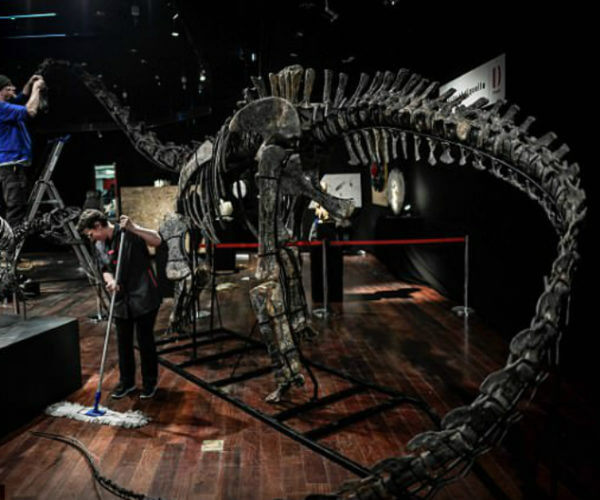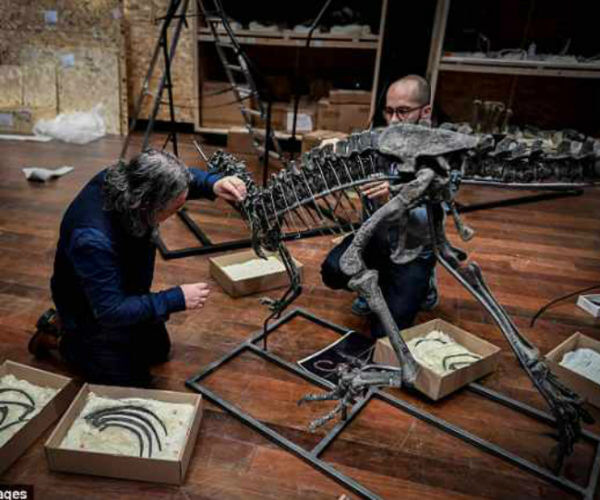If you are ever looking for new home decor for that wow factor, then why not consider a dinosaur skeleton to be your new pièce de résistance.
Because just recently, Paris held an exclusive auction for avid collectors for two huge dinosaur skeletons, an allosaurus and a diplodocus, along with 87 other lots of natural artefacts.

“The fossil market is no longer just for scientists,” said Iacopo Briano of Binoche et Giquello, the auction house for the two dinosaurs.
The Italian expert claims that they have become “real objects of decoration, like paintings”, citing Hollywood actors Leonardo DiCaprio and Nicolas Cage as fans of such ornaments.
Expected to cost around £480,000 for the diplodocus and £650,000 for the allosaurus, these dinosaur skeletons are some of the first few to arrive in the market for collectors this year.

In an upcoming auction in June, there will be another huge skeleton of a theropod, expected to auction for up to 1.5 million euros.
While the rarity, verification and completeness of these collections are common determinants of the price they fetch, there are a few more that affect the auction.
Carnivores such as the allosaurus fetch more than herbivores such as the diplodocus due to their prominent sharp teeth. Consider the price of the allosaurus that is considered “small” at 3.8 metres long compared to its fellow auction member diplodocus that stands at thrice the size at 12 metres long.

With an increasing fan base notably the Chinese, these new bidders are now competing against multinational corporations, the “typical” buyers of dinosaur skeletons. In 1997, McDonald’s and Walt Disney were among donors who contributed to the €6.75 million to buy Sue – the most complete and best-preserved Tyrannosaurus rex – for the Field Museum of Natural History in Chicago. ‘Millions of people come to see it, it’s incredible publicity for companies,’ said Eric Mickeler, a natural history expert.
Around five dinosaur skeletons go to auction around the world each year.



